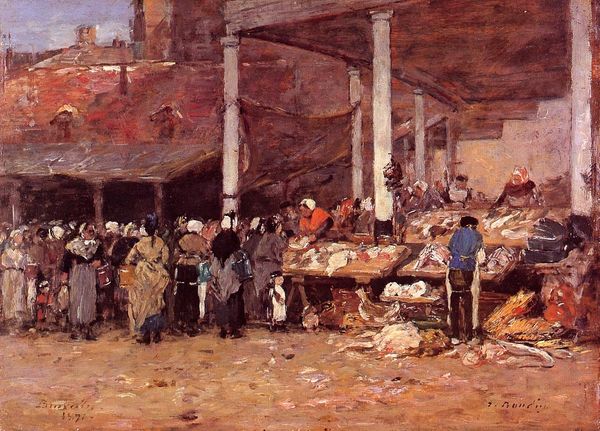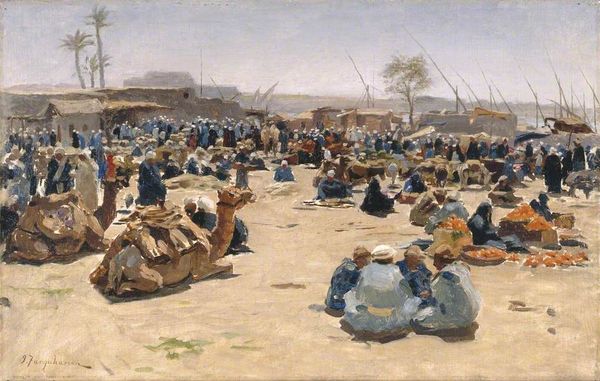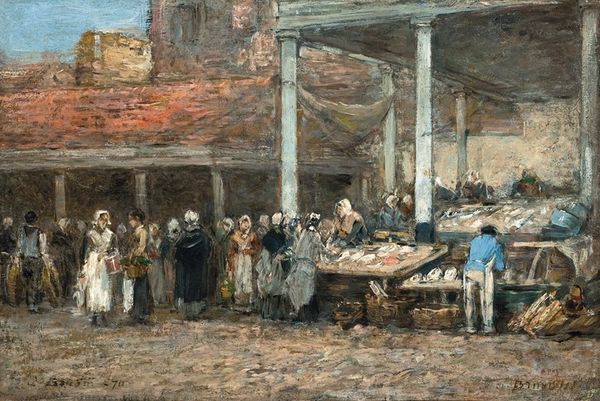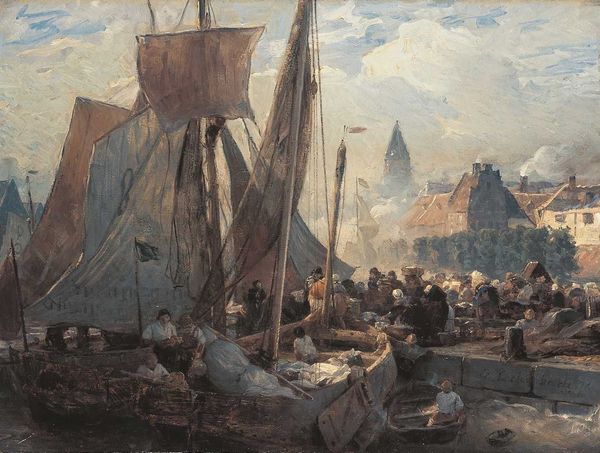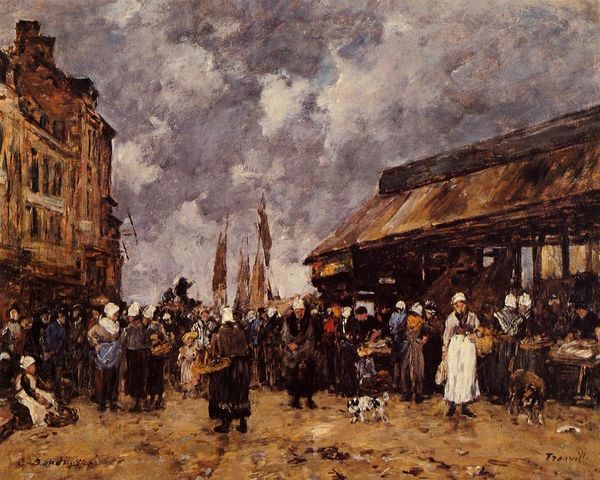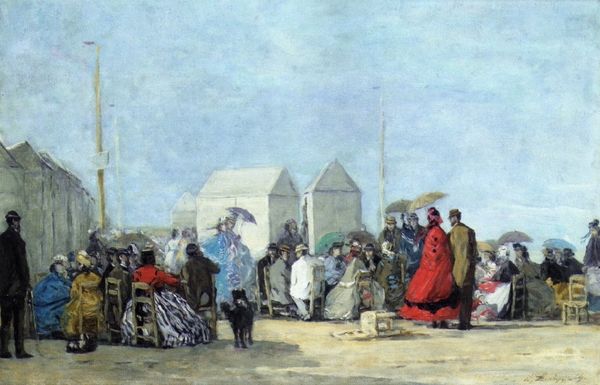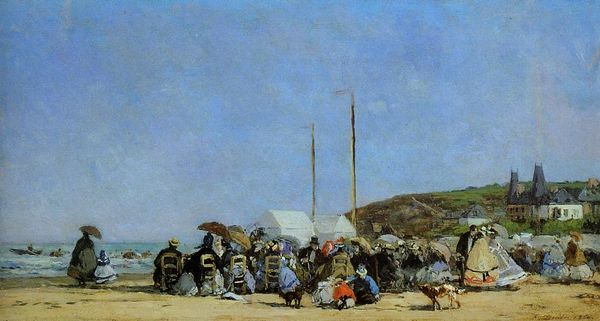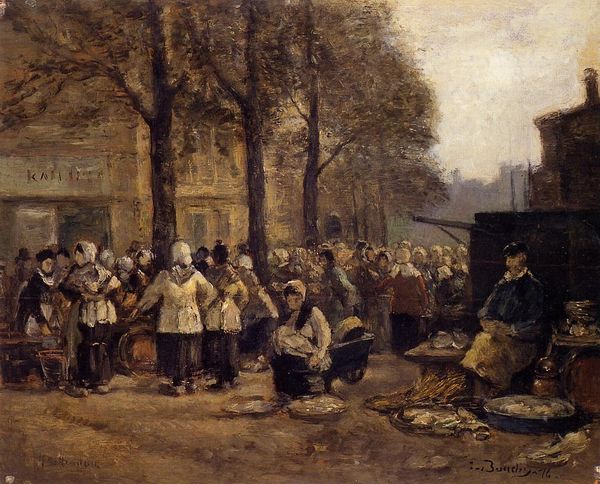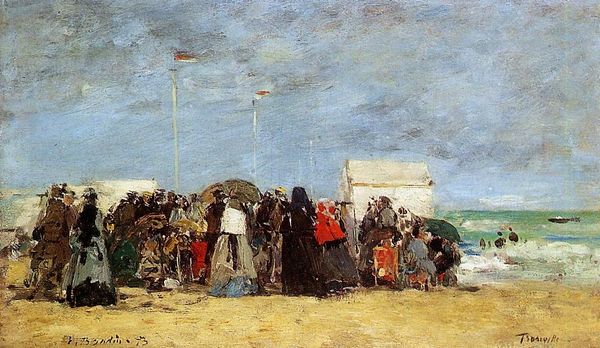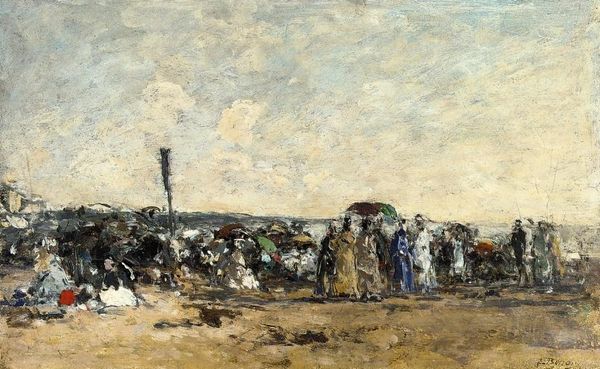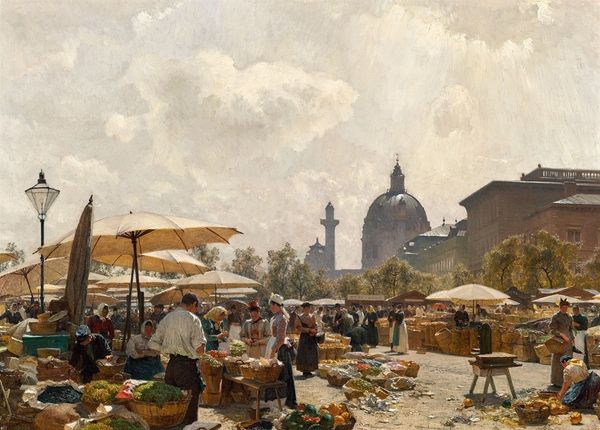
painting, plein-air, oil-paint
#
painting
#
impressionism
#
plein-air
#
oil-paint
#
landscape
#
oil painting
#
cityscape
#
genre-painting
Copyright: Public domain
Editor: Eugène Boudin's "Trouville, Fish Market," painted in 1875 using oil on canvas, really captures a sense of everyday life. The way the light filters through the canvas gives a vibrant energy, yet I also feel a distance from the people depicted. How do you see the piece and its connection to the culture of its time? Curator: That sense of distance you feel is interesting, isn't it? Boudin was capturing the burgeoning tourist culture alongside the daily routines of the working class. Note how he positions the fish market, a traditional space, within the increasingly popular coastal town of Trouville. It subtly comments on how leisure and labor intersect, shaping the socio-economic fabric of the era. Editor: So, it's less a straightforward depiction of a market and more of a commentary on social changes? I hadn't considered the "tourist gaze" influencing the artist's choices. Curator: Precisely. Consider also the muted palette. Is he idealizing this scene, or presenting it with a degree of realism, acknowledging the often-harsh realities of maritime economies? Moreover, how might the intended audience – potentially wealthy Parisians – have viewed this depiction of provincial life? It's a painting designed for public consumption that’s layered with different social elements. Editor: That really puts the scene into a new light. I guess what appears spontaneous is deliberately composed to portray this specific intersection of classes and lifestyles. Thanks, I now better appreciate how art captures a wider social story beyond what’s just depicted on the surface. Curator: Absolutely, and that is where its cultural significance truly resides, as it encapsulates and portrays that turning point of its own history.
Comments
No comments
Be the first to comment and join the conversation on the ultimate creative platform.
